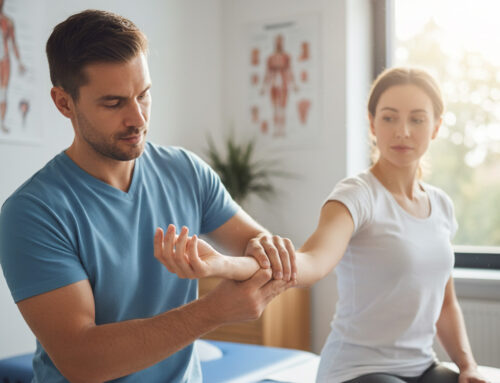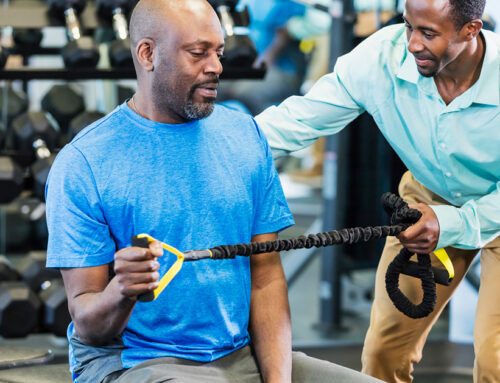Neck Pain and Poor Posture: Understanding the Connection and Seeking Relief
By: Dr. Kevin McIntyre B.Kin., DC
Neck pain is a prevalent issue that affects many individuals, and poor posture is a common culprit behind this discomfort. In today’s digital age, where prolonged sitting and hunching over screens have become the norm, maintaining good posture has become increasingly challenging. This blog delves into the connection between neck pain and poor posture, highlighting the impact of posture on neck health and offering tips for improving posture to alleviate neck pain.
The connection between neck pain and poor posture is obvious. Poor posture, particularly in the upper body, places excessive stress on various pain-generating tissues in the neck, which leads to the discomfort people experience. When we slouch or hunch forward, the natural curvature of the spine is compromised, causing the neck to protrude forward and the shoulders to round. This forward head posture, popularly known as “text neck” or “tech neck,” places additional strain on the neck muscles and can result in chronic pain.
It’s not accurate to believe that there is a “perfect posture” though. Our spines are meant to move and adopt various shapes throughout the day.
It is commonly believed that poor posture will create muscle imbalances. What this means is that certain muscles become tight and tender while other muscles get weak. Historically when speaking about posture and neck pain, the term used was “upper cross.” The validity of this term and the emphasis on this pattern of imbalance has come into question in recent years, but the fact still remains that there are common areas associated with postural neck pain. Most people that complain of neck pain and attribute it to poor posture, speak about their trapezius and the muscles at the base of the skull, rather than other areas like the front of the neck or the pectoral areas. Regardless, the take home point is that sustained postures (most commonly leaning your head forward while slouching) can irritate tissues over time and create pain in some common areas like the trapezius and back of the neck.
It’s best to move around and change your posture to avoid this overload of one or two specific areas.
How to avoid postural strain and posture-related neck pain:
- Mindful Ergonomics: A typical recommendation by professionals and the internet is to maintain proper ergonomics while working or using electronic devices. Common advice is to ensure that the screen is at eye level, sit in an upright position, and use a chair that provides adequate back support. To be more current, we would simply recommend that you try to find postures that are comfortable but change them often. Personally, I still advise people to sit up straight and avoid leaning their head down or forward, but it doesn’t mean that these factors are inherently bad for you. They won’t cause damage but will perhaps be more likely to irritate tissues over time.
- Regular Breaks and Movement: Take frequent breaks from prolonged sitting or screen time to stretch and move around. Perform simple neck and shoulder exercises to alleviate tension.
- Strengthening Exercises: Engage in exercises that target the neck, upper back, and shoulder muscles to improve posture and support the neck’s natural curvature. If you need assistance with this, please give us a call; it’s what we do!
- Ergonomic Support: Use ergonomic aids such as supportive pillows, lumbar rolls, or an adjustable standing desk to promote proper alignment and reduce strain on the neck. Like what was mentioned above, this doesn’t mean that there is one perfect posture you must adhere to. Sit in different postures throughout the day, but most of them should have you more upright than slouching.
- Mindful Posture Awareness: Be mindful of your posture throughout the day. Check in with yourself frequently to ensure you’re sitting or standing with a tall spine, relaxed shoulders, and your head aligned with your shoulders. Even still, you need to move around, so change your positions and be mindful of whether your muscles are getting irritated or stiff.
Neck pain caused by poor posture is a widespread issue that can significantly impact one’s well-being. By understanding the connection between neck pain and poor posture, individuals can take proactive steps to improve their posture, alleviate discomfort, and promote long-term neck health. Incorporating ergonomic practices, regular movement, and strengthening exercises into daily routines can make a significant difference in reducing neck pain and enhancing overall posture.
It’s important to note that if neck pain persists or worsens despite efforts to improve posture, it is advisable to seek professional medical advice for a comprehensive evaluation and personalized treatment recommendations. At Burlington Sports Therapy, we treat posture-related neck pain daily. There are many different strategies to assist with this condition, and we can work together to find a solution that works for you and your comfort level.








